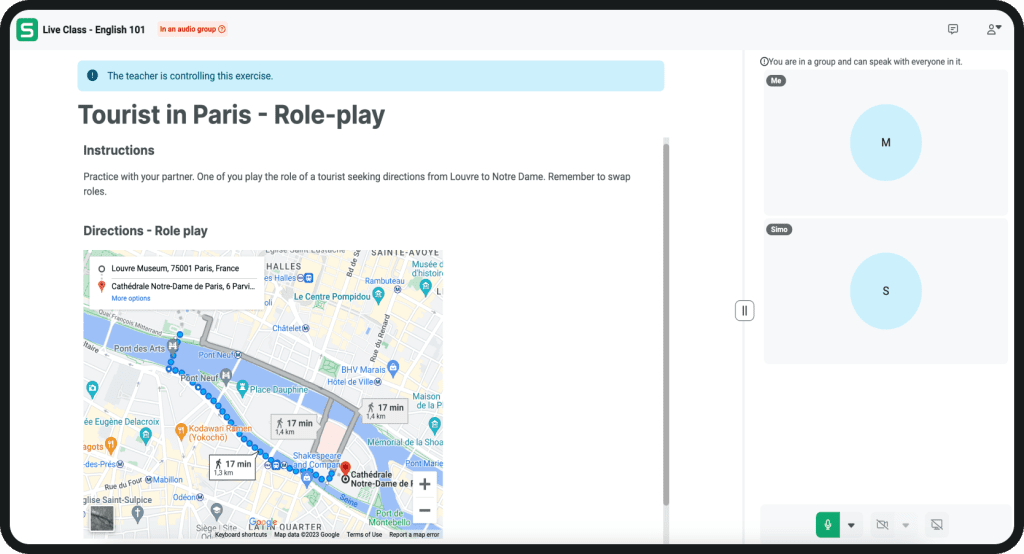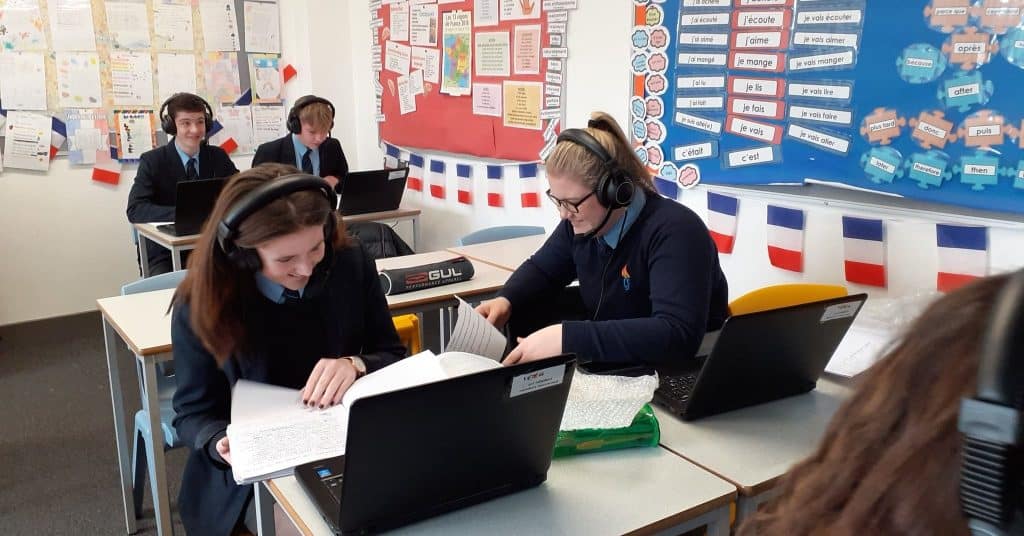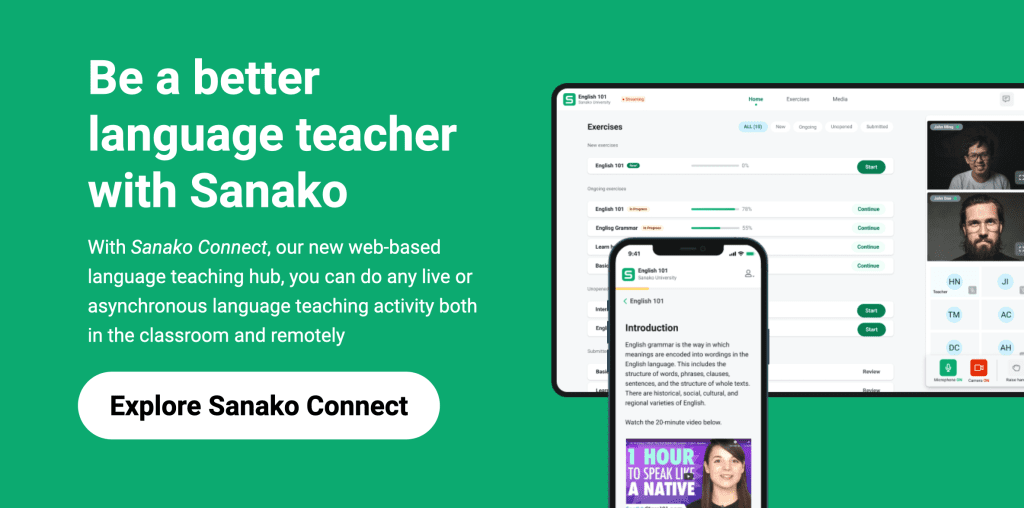As teachers, we constantly strive to improve our skills and better meet the needs of our students. In the field of second language education, this is especially crucial, as we are not just imparting knowledge but also helping our students navigate the complex and nuanced world of communication. In this article, we will explore practical tips on how to become a better language teacher and take a look at some engaging activities to transform your language teaching and ensure your students are inspired and motivated to learn.
Understanding the role of a language teacher
Before we dive into specific teaching strategies or practical classroom examples, let’s take a moment to clarify the role of a language teacher. At its core, our job as language educators is to facilitate language learning and help our students become proficient communicators in their chosen target language. Beyond that, however, we also act as mentors, supporters, and motivators for our students. By understanding the broader scope of our role, we can better serve our students and foster a positive learning environment.
The importance of language education
Language education is about more than just learning grammar and vocabulary; it is a gateway to intercultural understanding, personal growth, and intellectual development. As language teachers, we have the power to shape our students’ worldviews and cultivate their curiosity and empathy. By keeping this in mind, we can approach our teaching with a better sense of purpose and passion.
Language education is also crucial for global communication and collaboration. In today’s interconnected world, the ability to speak multiple languages is an asset in many fields, from business to diplomacy to healthcare. By equipping our students with language skills, we are preparing them for success in a globalized society. As language teachers, we should try to remind ourselves about this important mission.
Key responsibilities of a language teacher
In order to be effective language teachers, there are several key responsibilities that we must prioritize. These include:
- Creating a safe and inclusive learning environment: As language teachers, we must ensure that all students feel comfortable and respected in our classrooms. This means creating a welcoming atmosphere where students feel free to ask questions, make mistakes, and express themselves without feeling anxiety.
- Developing engaging and relevant lesson plans: Language learning should be fun and engaging, not dry and boring. By creating lessons that are relevant to our students’ interests and goals, we can keep them motivated and invested in their learning. Check out our dedicated post about lesson plans here.
- Utilizing best practices in language teaching: There are many different approaches to language teaching, and it’s important to stay up-to-date on the latest research and best practices. By incorporating proven teaching methods into our lessons, we can maximize our students’ learning outcomes. You can find our list of the top 10 language teaching strategies from this blog post.
- Providing timely and constructive feedback to students: Feedback is essential for language learning, as it helps students identify their strengths and weaknesses and make progress towards their goals. As language teachers, we must provide clear and constructive feedback to our students on a regular basis. We have also covered the importance of feedback for language learners in a dedicated blog post, which you can find from this link.
- Continuously improving our own skills and knowledge: Language teaching is an ever-evolving field, and it’s important to stay current with new developments and trends. By attending conferences, workshops, and other professional development opportunities, we can continue to grow and improve as teachers.
By prioritizing these responsibilities, we can create a positive and effective language learning experience for our students. As language teachers, we have the power to shape our students’ futures and make a lasting impact on their lives.
Developing your own teaching skills
No matter how experienced or skilled we are as teachers, there is always room for growth and improvement. As a language teacher, it is essential to continuously develop your teaching skills to provide the best possible education to your students. Here are some areas to focus on in order to develop your teaching skills:
Effective lesson planning
One of the most crucial aspects of language teaching is creating engaging and relevant lesson plans. Effective lesson planning involves taking into account your students’ learning styles, interests, and abilities, as well as incorporating a variety of teaching methods and materials. By planning carefully and thoughtfully, you can create a dynamic and effective learning experience for your students.
When planning your lessons, it’s important to consider the learning goals and objectives of each lesson. What do you want your students to learn and achieve? How can you structure your lesson to meet those goals? Additionally, it’s important to consider the pacing of your lesson. Are you allowing enough time for students to practice and apply what they have learned?
Utilizing diverse teaching methods
Speaking of teaching methods, it’s important to remember that different students learn best in different ways. Some may thrive on interactive, hands-on activities, while others may prefer more structured or reflective approaches. By incorporating a variety of teaching methods into your lessons, you can better cater to the needs and preferences of each of your students.
Some examples of teaching methods include group work, pair work, role-playing, and games. These methods can be particularly effective in language teaching, as they provide opportunities for students to practice their language skills in a fun and engaging way. Additionally, you can incorporate visual aids and multimedia content, such as videos or images, to enhance your lessons and make them more memorable.
Incorporating educational technology in language teaching
In today’s digital age, technology can be a powerful tool for language learning. From language learning apps to interactive whiteboards, there are a multitude of ways to incorporate technology into your teaching. Just be sure to use it strategically and purposefully, and to keep in mind that technology is not a substitute for human connection and interaction.
Some examples of how you can incorporate technology into your language teaching include using dedicated language teaching tools such as Sanako Connect to create purposefully designed language learning activities for your students. Sanako Connect can be used for live and asynchronous language teaching and it includes a variety of language learning features such as flashcards, automated pronunciation grading, interactive video and audio tasks, dedicated workflows for speaking and listening exams, live group work and role-plays and much more.
This screenshot shows an example live collaborative activity in which the students are asked to role-play a tourist in Paris who is seeking instructions to get from location A to B. The students are engaged in live audio call using Sanako Connect platform.
Continuous professional development
Finally, in order to be a truly effective language teacher, it’s important to invest in continuous professional development. This might involve attending conferences or workshops, seeking out mentorship or coaching, or engaging in ongoing self-reflection and learning. By staying up to date on the latest research and best practices in language teaching, you can ensure that you are always providing your students with the best possible education.
Continuous professional development can also help you stay motivated and engaged in your teaching practice. By connecting with other language teachers and sharing ideas and experiences, you can gain new insights and perspectives on your teaching practice.
Developing your teaching skills is an ongoing process that requires dedication and effort. By focusing on effective lesson planning, utilizing diverse teaching methods, incorporating technology in language teaching, and investing in continuous professional development, you can become a more effective and successful language teacher!
Building strong student-teacher relationships
Of course, even the most well-planned and skillfully executed lesson plans won’t be effective if you don’t have a positive and supportive relationship with your students. Here are some strategies for building strong student-teacher relationships:
Establishing a positive classroom environment
Your students’ learning environment is hugely influential in their overall experience and success in your class. By creating a warm, welcoming, and inclusive classroom atmosphere, you can help your students feel safe, comfortable, and motivated to learn.
One way to establish a positive classroom environment is to decorate your classroom with bright and colorful posters that feature inspirational quotes or images related to the subject matter you are teaching. You can also create a seating chart that allows students to sit next to classmates they feel comfortable with or that encourages collaboration and teamwork.
Another way to create a positive classroom environment is to establish clear expectations for behavior and academic performance. Make sure your students understand what is expected of them and what the consequences will be if they do not meet those expectations. This can help students feel more secure and confident in their ability to succeed in your class.
Encouraging open communication
Communication is at the heart of language learning, and it’s also vital in building strong relationships with your students. Encourage open dialogue and feedback, and make sure your students feel comfortable approaching you with questions or concerns with out feeling embarrassed or being afraid to face criticism.
You can also use classroom learning activities that encourage collaboration and discussion, such as group work projects, role-plays or debates.
Providing constructive feedback
Feedback is a crucial part of the learning process, but it can be difficult to give and receive. Make sure that any feedback you give is specific, constructive, and framed in a positive and encouraging way. Additionally, be open to receiving feedback from your students and using it to improve your teaching.
One way to provide constructive feedback is to use a rubric or checklist to assess your students’ work. This can help you provide specific feedback on areas where they excel and areas where they can improve. You can also use peer feedback, where students provide feedback to each other, to help them develop their own critical thinking and communication skills.
Remember, building strong student-teacher relationships takes time and effort, but it’s well worth it in the end. By creating a positive and supportive learning environment, encouraging open communication, and providing constructive feedback, you can help your students achieve their full potential and become lifelong learners.
Catering to different learning styles
As a language teacher, your ultimate goal is to help your students become proficient in a new language while also fostering intercultural understanding. However, achieving this goal can be challenging, especially when you have a diverse group of learners with different backgrounds, experiences, motivational factors, and learning styles. In order to meet the needs of all your students, it’s important to be aware of and accommodating of different learning styles. Here are some strategies for doing so:
Identifying individual student needs
Each of your students will have unique strengths, challenges, and preferences when it comes to learning new languages (or to attend the classes in the first place!). Some students may be visual learners who benefit from diagrams, charts, and other visual aids, while others may be auditory learners who prefer listening to explanations or participating in group discussions. Kinesthetic learners, on the other hand, may need hands-on activities or movement to help them understand new concepts.
By taking the time to get to know each student as an individual and tailoring your teaching accordingly, you can help everyone reach their full potential.
Adapting teaching methods for varied learning styles
Incorporating a variety of teaching methods is a great start, but it’s also important to be able to adapt your teaching on the fly based on your students’ needs. If you notice a student struggling with a particular concept or approach, don’t hesitate to try out a different method or provide additional support.
For example, if you have a student who is a visual learner, you can use pictures, videos, or other visual aids to help them understand new vocabulary or grammar rules. If you have a student who is an auditory learner, you can use podcasts, songs, or recordings to provide additional listening practice. And if you have a kinesthetic learner, you can incorporate language learning games, role-playing, or other interactive activities to help them practice using the language in context.
Supporting students with special needs
Finally, it’s crucial to provide appropriate support and accommodations for students who may have special needs or learning differences. For example, if you have a student who has a hearing impairment, you can provide transcripts or captions for any audio or video materials you use in class. If you have a student who has dyslexia, you can provide alternative materials and learning activities or allow them to use assistive technology, such as text-to-speech software. For more tips on this topic, remember to also check out our dedicated blog post on learning disabilities and foreign language learning.
By focusing on these above areas, you can become a more effective and inspiring language teacher, and help your students on their journey to language proficiency and intercultural understanding. Remember to stay reflective, curious, and compassionate, and never stop learning yourself!
If you are interested in learning more about how Sanako’s language teaching software supports language teachers and students and would like to see how it could benefit your institution, book a FREE remote demo now to see it in action.



